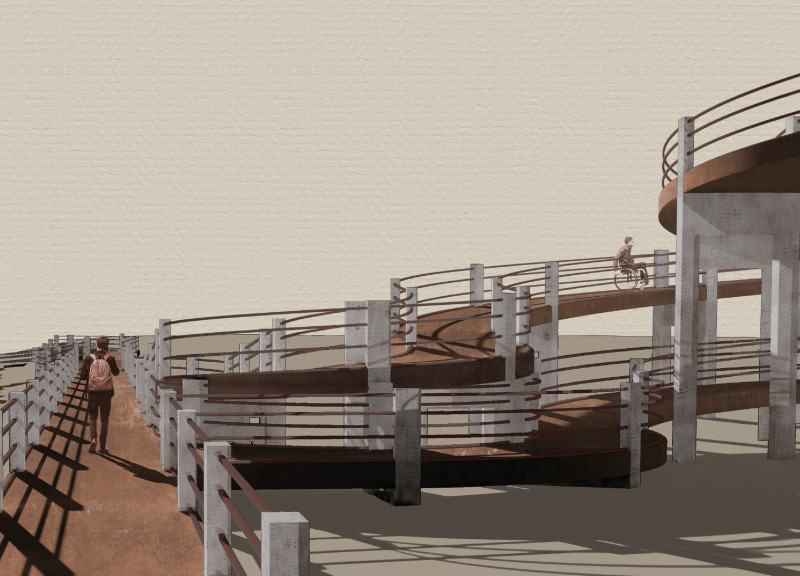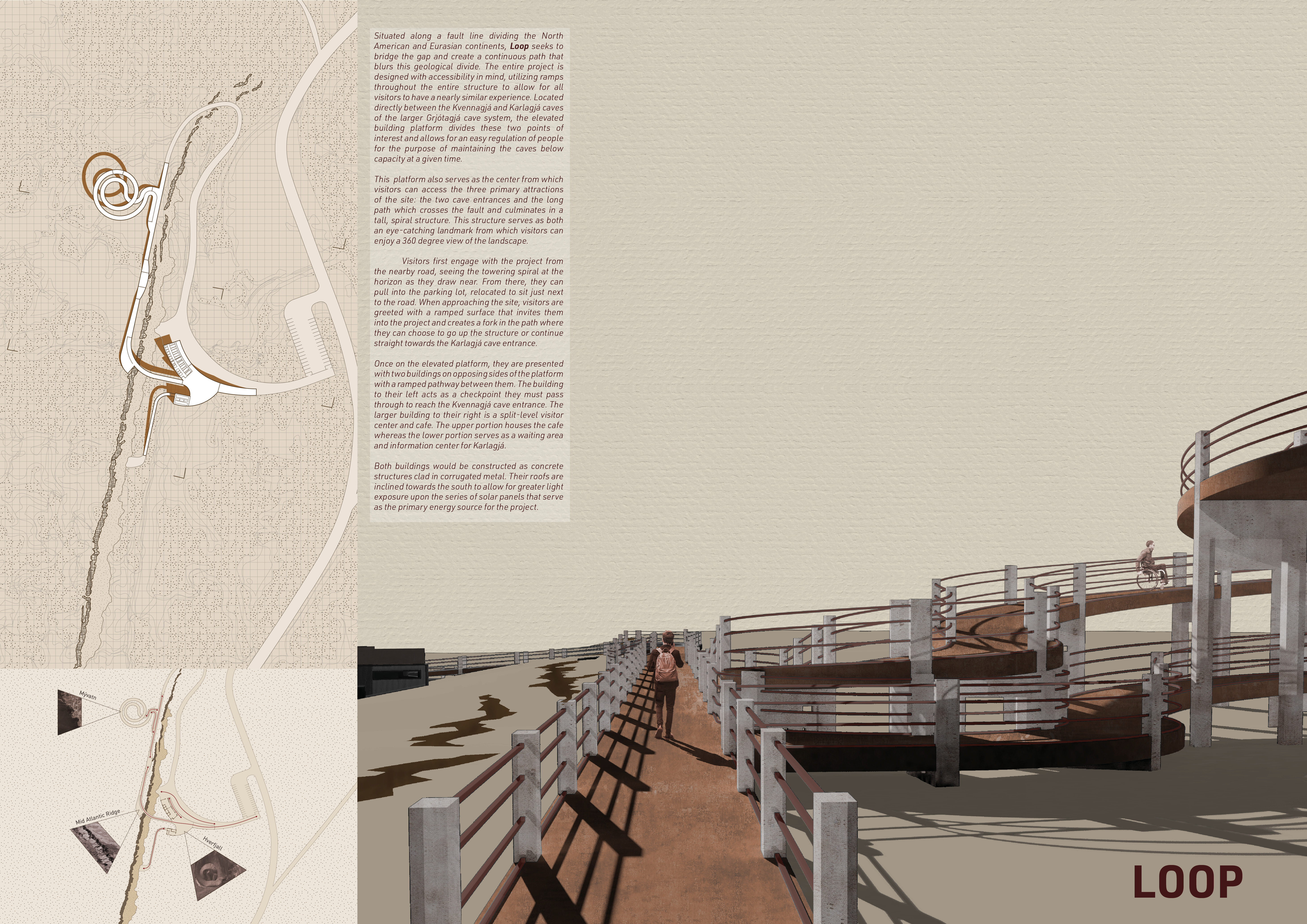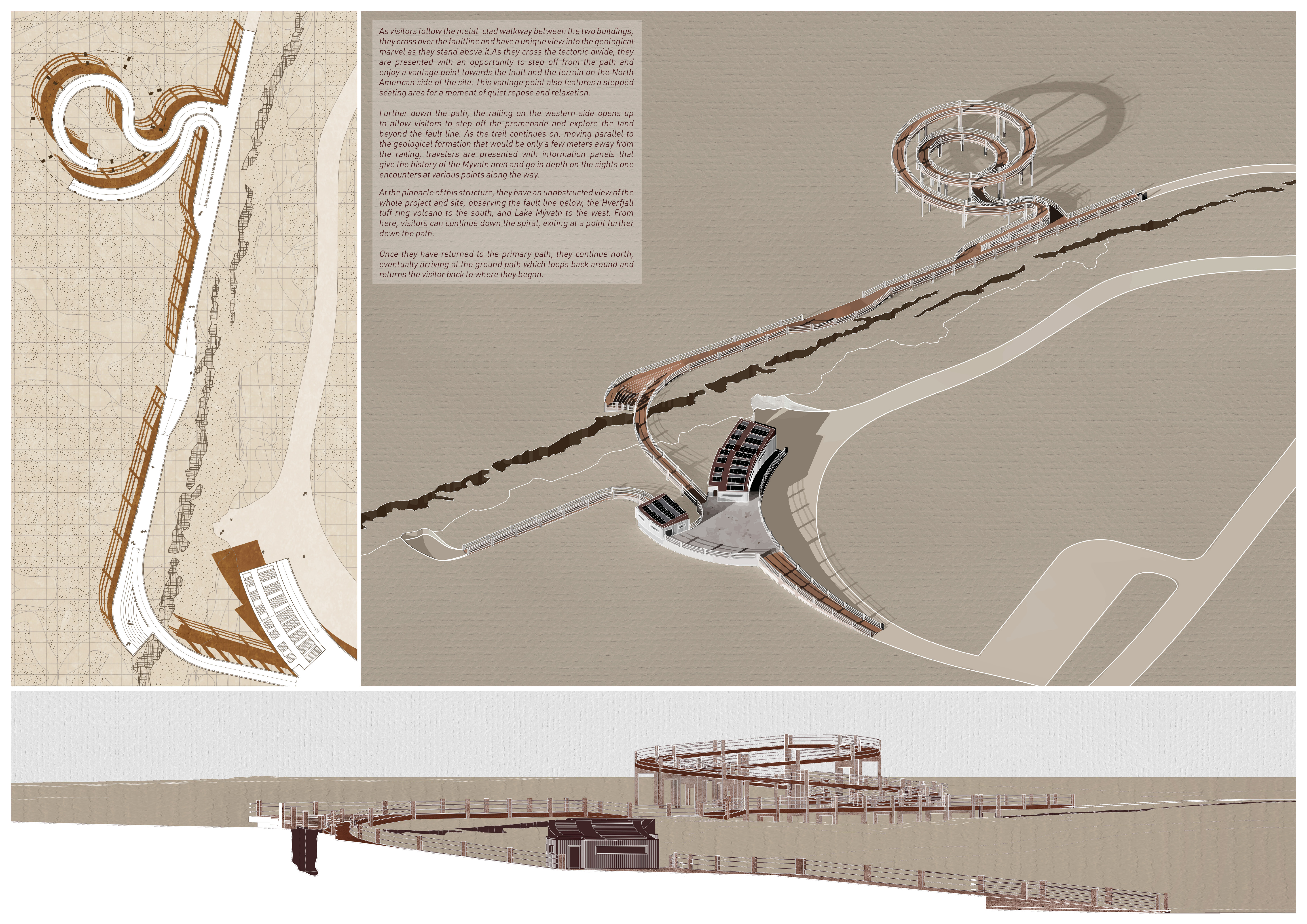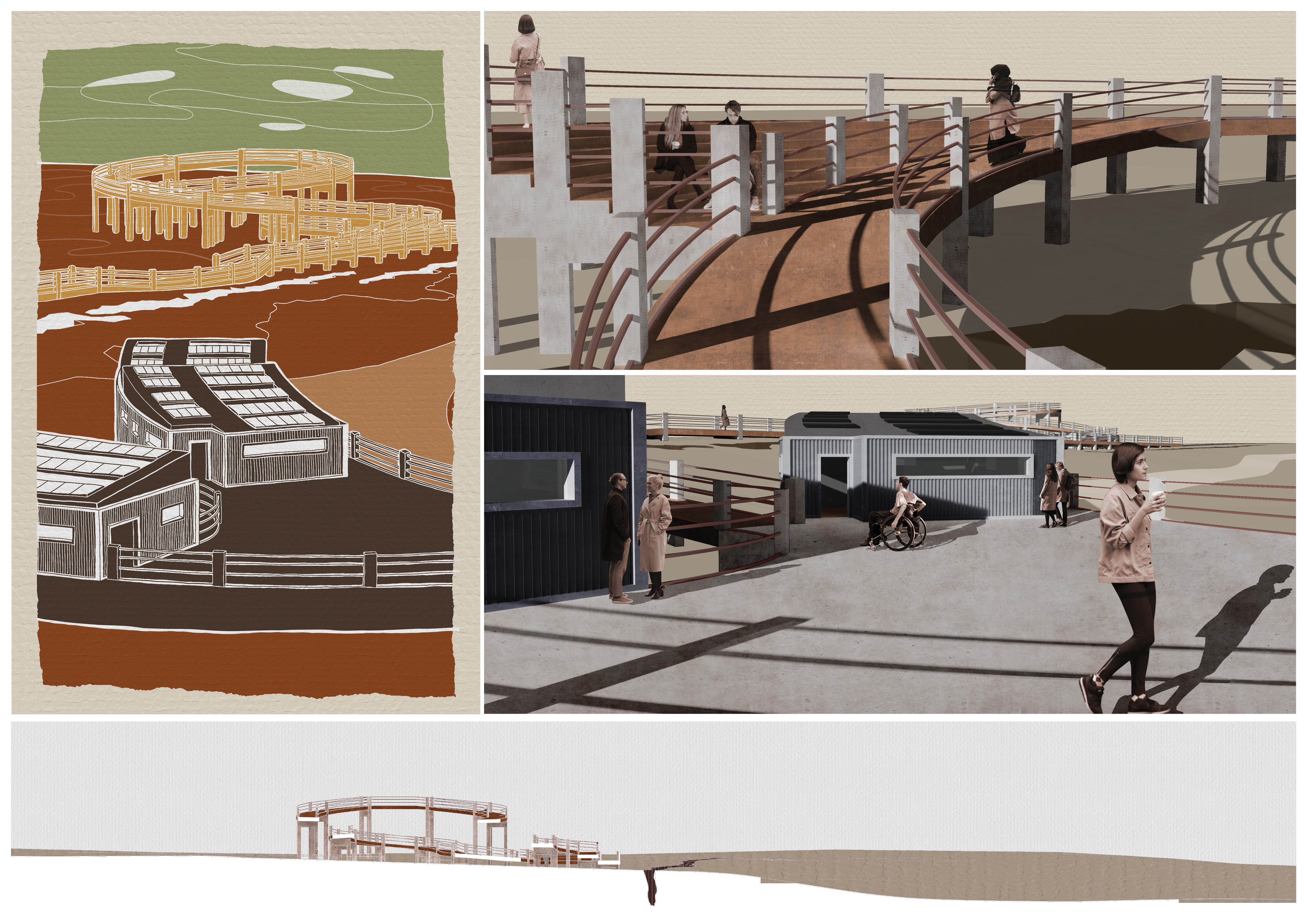5 key facts about this project
Loop is situated along a geological fault line that separates the North American and Eurasian tectonic plates. This location offers a unique opportunity to engage visitors with the geological features while emphasizing both accessibility and education. The overall design focuses on creating a continuous path that invites exploration for all types of visitors.
Design Concept
At the center of the design is an elevated platform that divides the key geological features, specifically the Kvennagjá and Karlagjá caves, which are part of the larger Grjótagjá cave system. This layout allows for controlled visitor movement and helps maintain capacity levels in the caves. The platform creates a sustainable environment where exploration can thrive while highlighting the site's geological importance.
Building Configuration
The layout includes two main buildings located on opposite sides of the platform. The structure on the left serves as a checkpoint for those entering the Kvennagjá cave, while the larger building on the right operates as a visitor center and café across two levels. This arrangement encourages social interaction while providing areas for education and rest. Visitors on the upper level of the café can enjoy beautiful views of the landscape, adding to the overall experience.
Spiral Structure and Pathway System
A tall spiral structure marks the end of the central pathway. This landmark provides a 360-degree view for visitors, allowing them to appreciate the landscape in its entirety. The pathway system is designed to promote interaction, enabling visitors to walk across the fault line and observe geological formations closely. Along the pathways, information panels offer details about the Mývatn area, enhancing the educational experience for everyone.
Materials and Sustainability
Concrete is used for the main structural components, ensuring durability. The buildings are clad in corrugated metal, providing a contemporary look that fits the rugged environment. The roofs slope southward to capture sunlight for solar panels that provide energy for the facility, demonstrating a commitment to sustainability.
Seating areas are thoughtfully placed along the pathways, allowing visitors to take a moment to relax and enjoy the scenery. These spots offer views over the fault lines and the surrounding landscape, fostering a connection between people and the geological features present throughout the area.






















































